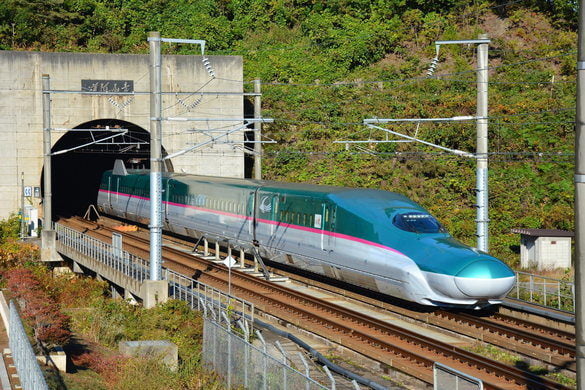China has the longest road tunnel length. With more than 15285 tunnels, China has a total road tunnel length of 16229 kilometers. Japan, on the other hand, has only 4026 tunnels and a total length of 9760km. Yet, Japan has the longest tunnel in the world.
Seikan tunnel is the longest tunnel in the world, built in 1988. With a length of 53.8km, Seikan connects the islands Honshu and Hokkaido. Besides the normal and regular trains, the tunnel has a line of exclusive trains for passengers with more money. More than 23km of the tunnel go beneath sea level.
The tunnel was the solution a safer way to travel. In 1954, a typhoon sank five ferry boats in Japan’s Tsugaru Strait. More than 1,400 people died. As a response to the public outrage, the government looked for a safer way to cross the dangerous strait. Engineers agreed a bridge is risky to build and a tunnel is the perfect solution. Work began 10 years later.
How Long Did it Take to Build?
Here is a quick construction timeline.
- Geological surveying began on April 24, 1946
- On March 23, 1965, Japan Railway Construction Public Corporation is established
- Construction on the main tunnel began on September 28, 1971
- January 27 1983, pilot tunnel breakthrough
- March 10 1985, main tunnel breakthrough
- The tunnel opened on March 13, 1988
- On March 26, 2016, Shinkansen services commence operation through the tunnel
Japan considered a connection between the islands Honshu and Hokkaido since the Taisho period. But due to loss of overseas territory during World War II, surveying began.
The decision to commence work on the tunnel came in September 1971. The necessity of the project was question at times during construction.
When the tunnel opened on March 13, 1988, the cost for construction topped $7 billion. This was 12 times more than the original budget. Now, much of that is due to inflation over the years.
For commemoration of the event, a commemorative 500 yen coin depicting the tunnel was issued by the Japan Mint in 1988.
Yet, even though the tunnel is fully operational, more passengers use air transport. The simple reason is time and money. If you want to travel between Tokyo and Sapporo by train, you will need eight hours. And you have to transfer from Shinkansen to narrow-gauge express train at Hakodate. By air, the journey is three hours and thirty minutes with airport access time.
Structure of the Tunnel
The tunnel comprises two railway stations. One is Tappi Kaitei on Honshu Island and the second is Yoshioka Kaitei on Hokkaido Island. These railway stations act as emergency escape points in the event of a disaster. They are equipped with exhaust fans to deplete smoke, as well as infrared fire alarms.
In an event of a disaster, these stations provide the equivalent safety of a much shorter tunnel. Before the construction of the Hokkaido Shinkansen, both stations contained museums detailing the history and function of the tunnel.
Future of the Tunnel
The tunnel is already among the most modern tunnels in the world. And it is only going up from there. In 2014, the tunnel changed to Toshiba’s EH800 Bo-Bo+Bo-Bo Series electric locomotives replacing the existing ED79 and EH500 classes. The new 25m long electric locomotives will have a power rating of 4MW and run at a speed of 110km/h.
In 2016, the tunnel facilitated the passing of the Shinkansen bullet train. They upgraded the electric system of the tunnel from 20kV to 25kV.
Train speed is limited to 140km/h during at the moment, but it will go up from there.
Quick Facts
- More than 2,800 tons of explosives were used in the construction
- More than 168 thousand tons of steel was used in the construction. Just for comparison, that is enough steel for four Petronas Towers
- Seikan tunnel is the deepest railway line in the world, running 787 feet below the surface of the sea
- During construction in 1976, workers accidentally hit a patch of soft rock and water gushed into the tunnel at a whopping rate of 80 tons per minute. It took two months to control the flood
- The tunnel hosts the world’s largest maintenance base inside a tunnel with the 16m wide and 91m long set-off base
- Throughout the year, the tunnel maintains a temperature of 20 degrees Celsius and between 80% and 90% humidity



